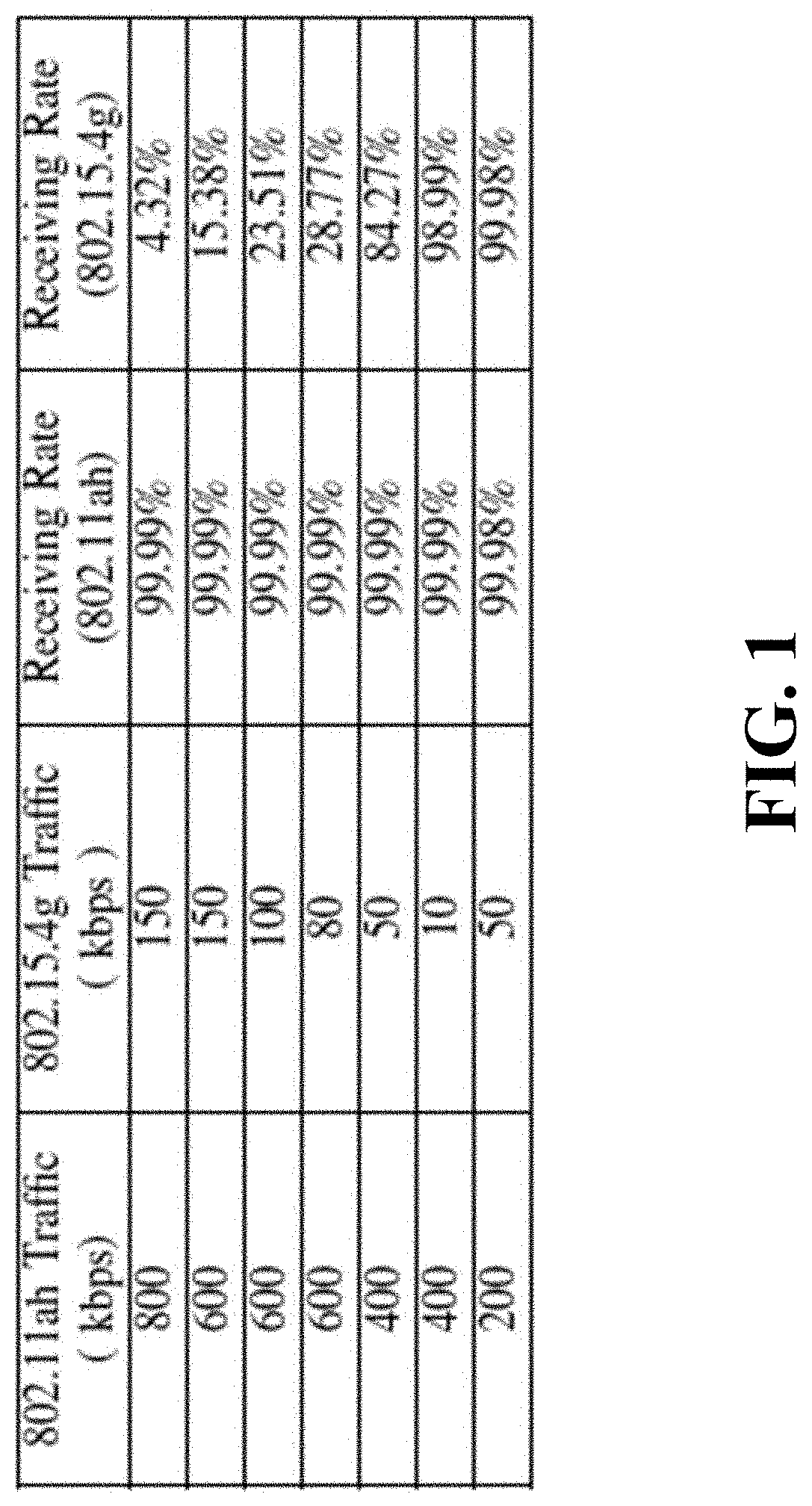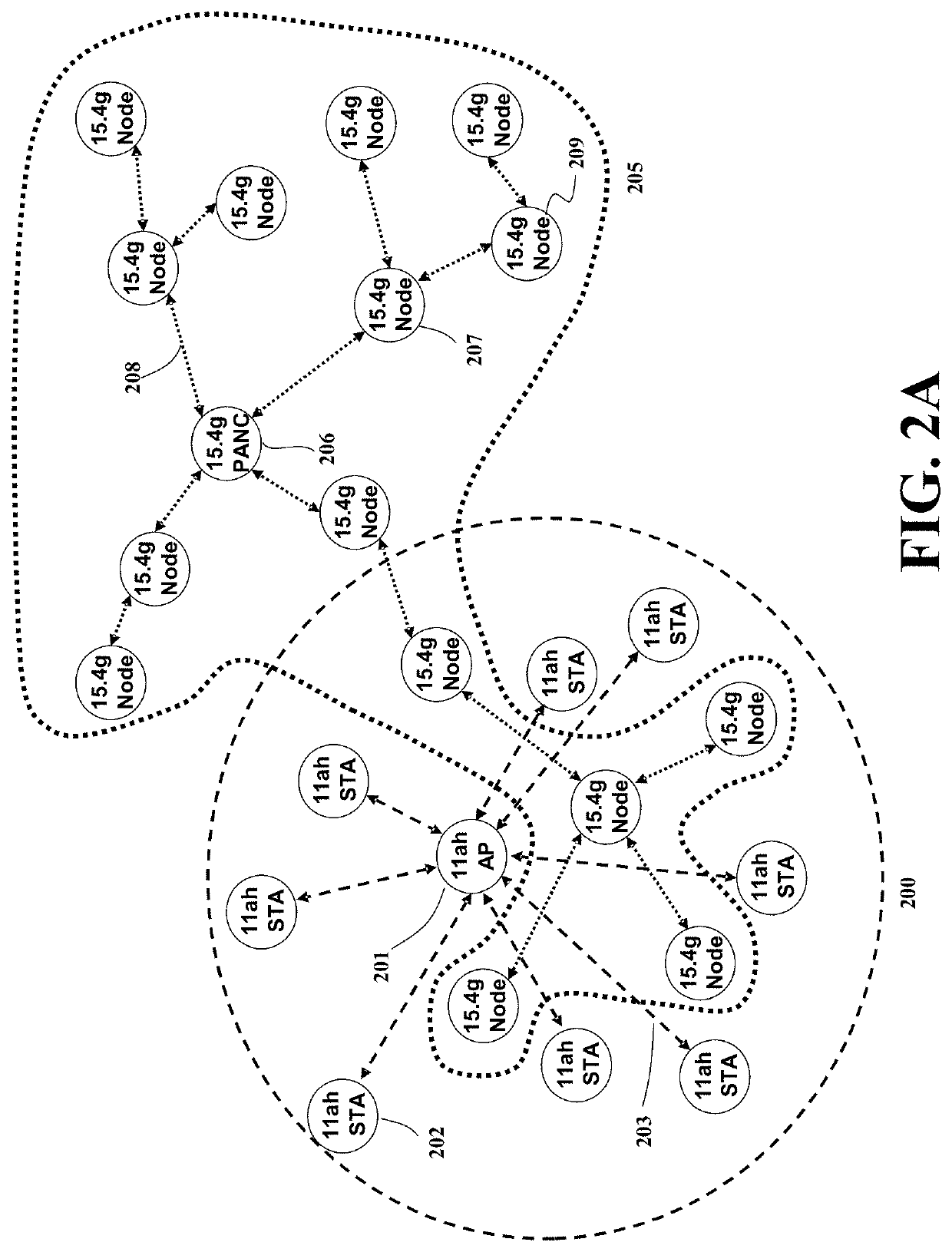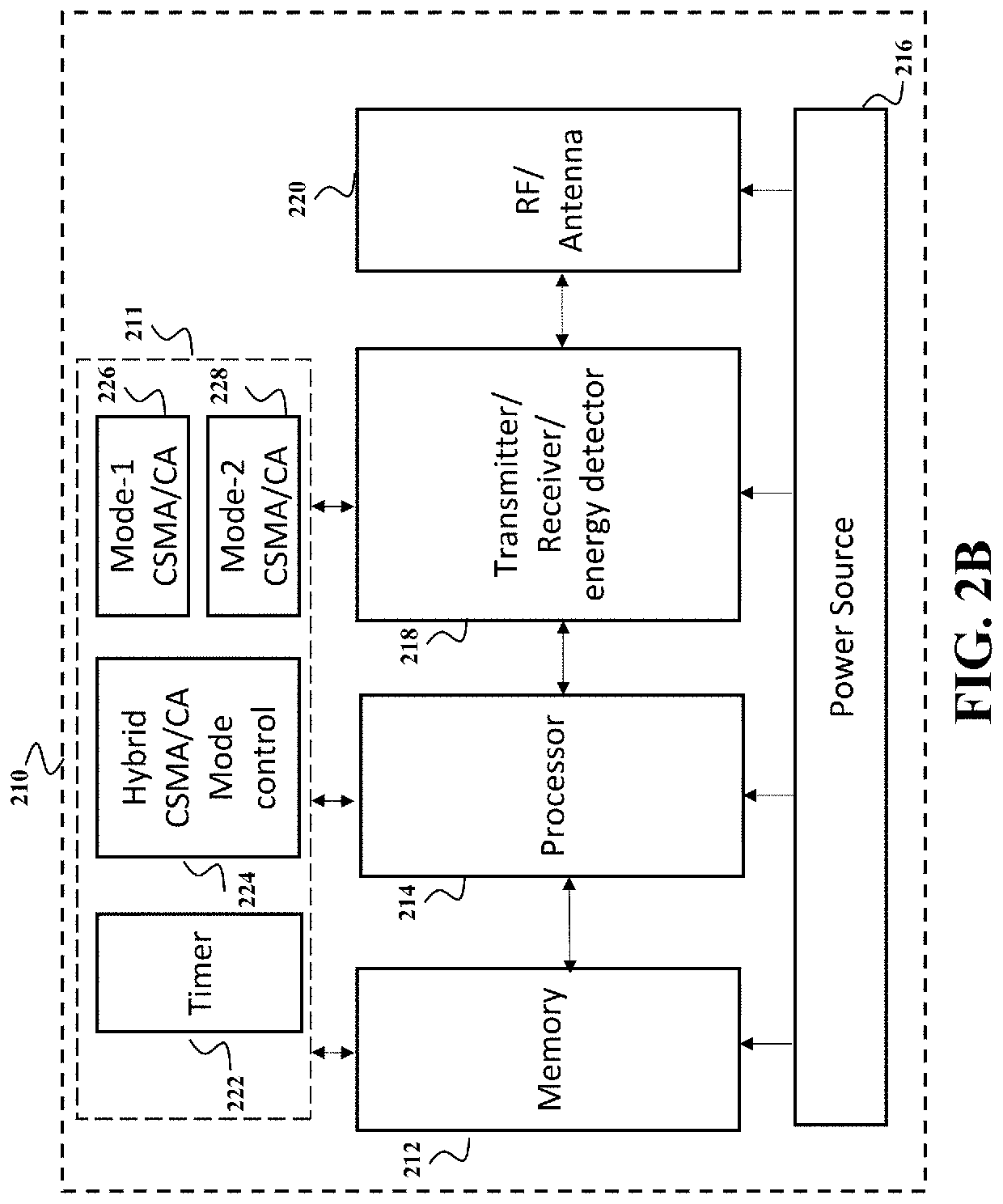Hybrid Carrier Sense Multiple Access System with Collision Avoidance for IEEE 802.15.4 to Achieve Better Coexistence with IEEE 802.11
a multi-access system and collision avoidance technology, applied in the field of hybrid carrier sense multiple access system, can solve the problem that the location-based ieee 802.11ah network can severely interfere with i
- Summary
- Abstract
- Description
- Claims
- Application Information
AI Technical Summary
Benefits of technology
Problems solved by technology
Method used
Image
Examples
case-2
[0069]IEEE 802.11ah channel access can be divided into 1) immediate access, in which if data arrives, channel is idle and idle channel continues for more than DIFS time period, the data is transmitted without backoff and 2) deferred access, in which if data arrives, channel is busy, then backoff process is invoked and data transmission is deferred. An IEEE 802.11ah device ignores IEEE 802.15.4g transmission if the detected energy level is below IEEE 802.11ah ED threshold and detects IEEE 802.15.4g transmission if the detected energy level is above IEEE 802.11ah ED threshold. Therefore, the IEEE 802.11ah interference scenarios can be classified into following four cases:[0070]Case-1: IEEE 802.11ah performs immediate channel access and ignores IEEE 802.15.4g transmission[0071] IEEE 802.11ah performs delayed channel access and ignores IEEE 802.15.4g transmission[0072]Case-3: IEEE 802.11ah performs immediate channel access and detects IEEE 802.15.4g transmission[0073]Case-4: IEEE 802.11...
case-3
[0081 is similar as Case-1, but in this case, the latest interfering IEEE 802.11ah transmission process 830 cannot start at the end of IEEE 802.15.4g transmission since during IEEE 802.15.4g transmission 800, channel is considered as busy. Therefore, the latest interfering IEEE 802.11ah transmission process 830 can only start at the start of IEEE 802.15.4g transmission. As a result, the length of potential interfering IEEE 802.11ah data arriving time period 810 is Tdtim=Thd+SIFS+Tha.
[0082]Similarly, for Case-4, the length of potential interfering IEEE 802.11ah data arriving time period 810 is given by Tdtdf=max{Thd, Tgd}+Thbo+Thd+SIFS+Tha.
[0083]Combining Case-3 and Case-4, if IEEE 802.11ah device detects IEEE 802.15.4g data transmission, the potential IEEE 802.11ah data arriving time period that can interfere with IEEE 802.15.4g data transmission can be estimated as
Titddt=PiTimdt+(1−Pi)Tdfdt=Thd+SIFS+Tha+(1−Pi)(max{Thd,Tgd}+Tboh) (6)
[0084]The probability IEEE 802.11ah transmission ...
PUM
 Login to View More
Login to View More Abstract
Description
Claims
Application Information
 Login to View More
Login to View More - R&D
- Intellectual Property
- Life Sciences
- Materials
- Tech Scout
- Unparalleled Data Quality
- Higher Quality Content
- 60% Fewer Hallucinations
Browse by: Latest US Patents, China's latest patents, Technical Efficacy Thesaurus, Application Domain, Technology Topic, Popular Technical Reports.
© 2025 PatSnap. All rights reserved.Legal|Privacy policy|Modern Slavery Act Transparency Statement|Sitemap|About US| Contact US: help@patsnap.com



